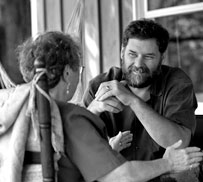![]()
Search
Recent Posts
- ChangingAging.org Redesign -- Please Bookmark!
- Disaster in Buffalo
- Power Up Friday
- Blanchard WinsDays
- Kevin Frick writes...
- Monkhouse Monday
- Getting Closer!
- Blanchard WinsDays
- Power Up Friday
- My Pick for Health and Human Services
- Understanding Health Care Reform
- Facts Are Stubborn Things: Social Security Edition
- Monkhouse Monday
- Localism is Coming
- Krugman Can't Wait...
Recent Comments
Category Archives
- AGING 100
- Aging
- Culture
- Dementia
- Eden Alternative
- Erickson School
- Green House
- Health Policy
- Longevity
- Media
- Rockets
Monthly Archives
- February 2009
- January 2009
- December 2008
- November 2008
- October 2008
- September 2008
- August 2008
- July 2008
- June 2008
- May 2008
- April 2008
- March 2008
- February 2008
- January 2008
- December 2007
- November 2007
- October 2007
- September 2007
- August 2007
 Subscribe to this blog's feed
Subscribe to this blog's feed
Announcements

Blog Data
« Role of the Next Generation of Culture Change Advocates | Main | Hey Doc, tell us how you REALLY feel... »
January 29, 2008 |Permalink |Comments (1)
Green Co-Housing
(h/t to Alex M)
New Housing Development Features Shared Renewable Energy
by Jennifer Runyon, Managing Editor
In a small town in southwestern New Hampshire a big idea is emerging. It's a concept called cohousing and it's beginning to break ground across America. Here, twenty-nine families live in a neighborhood of single-, double-, and quadruple-family homes that are clustered on a small portion of 113 acres of pasture, ponds and open land. The families will live independently of each other but share some important aspects of life including a farm, entertainment space and energy.
Seven central pellet boilers that use locally produced biomass fuel from New England Wood Pellet will provide heat and hot water to all the homes. According to Hulbert, the array of boilers is the largest residential pellet heat system in the country.
Nubanusit Neighborhood and Farm, located in Peterborough, New Hampshire, is made up of quality-built, environmentally-designed homes, a common house, professional office space, a working farm and woodlands with walking trails. The homes are clustered together to encourage interaction between neighbors and foster a real sense of community.
The concept of cohousing was attractive to Shelly and Robin Hulbert, founding partners, from early on.
"My husband and I had lived in an in-town neighborhood in Peterborough, when our children were young, that happened to be an inter-generational friendly group of folks where we had kind of a cohousing experience but we didn't have a name to put on it," says Hulbert, "and it was fabulous." A desire to farm, however, moved the couple two miles out of town. But farming in isolation can be difficult, they realized.
"It's hard to find someone to milk your cows when you go away," Hulbert says with a grin. They also missed the community they had lost. So when they first learned about cohousing, people living together in a tight neighborhood, sharing the land, a farm, and common space, the idea was very intriguing.
The idea moved from concept to reality when the couple discovered that what was then called "The Salisberg Inn," was going on the market. It was a beautiful old home with 113 acres of land bordering the Nubanusit river. Having once functioned as a farm, the land was rich in agricultural resources and history: in the mid-1800s it was the home of John Steele, who was Governor of New Hampshire from 1848-1849.
Comments ( 1)
Co-housing to include older people was new to me when I met a friend in Santa Fe, NM in 1992. The idea has real merit but I haven't seen much about it in general news. It would be especially useful in rural areas or areas of scarce resources. Here is a Google search I conducted to find out more about co-housing, especially for small communities which may be climate refugees or for elders to remain as part of their communities as they grow older














